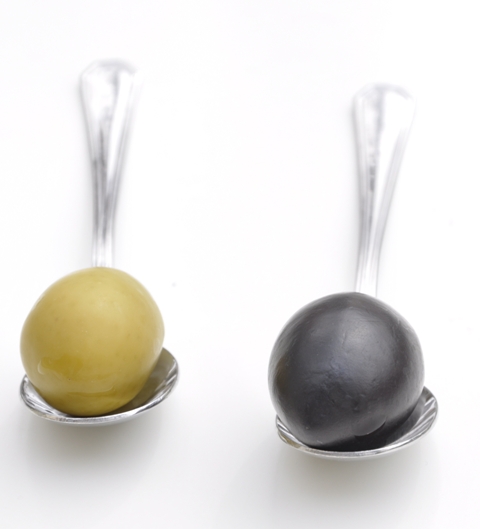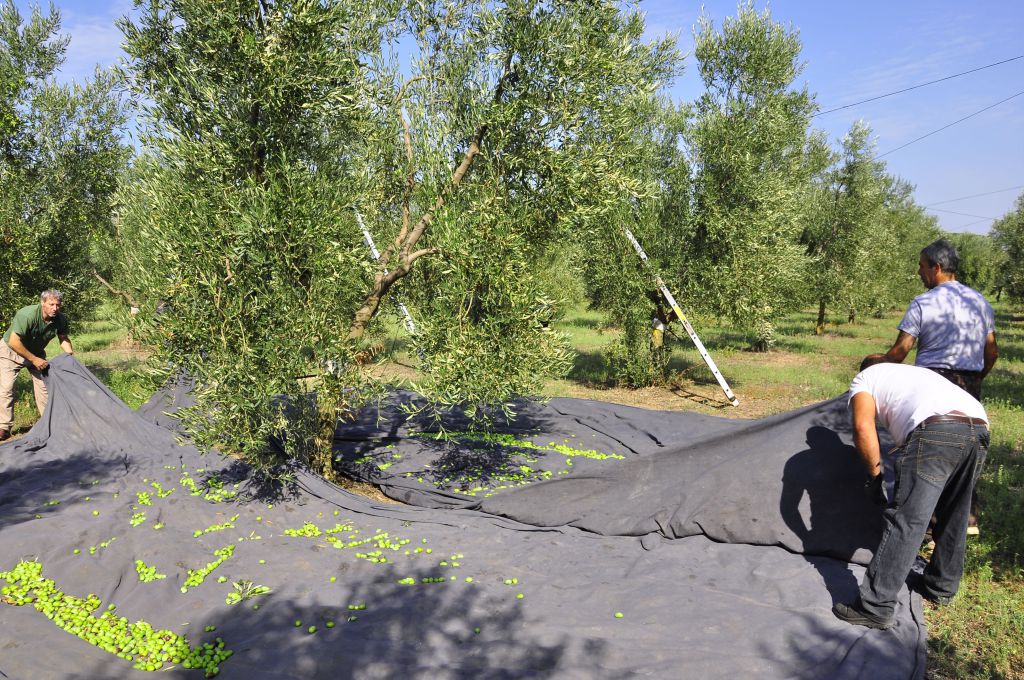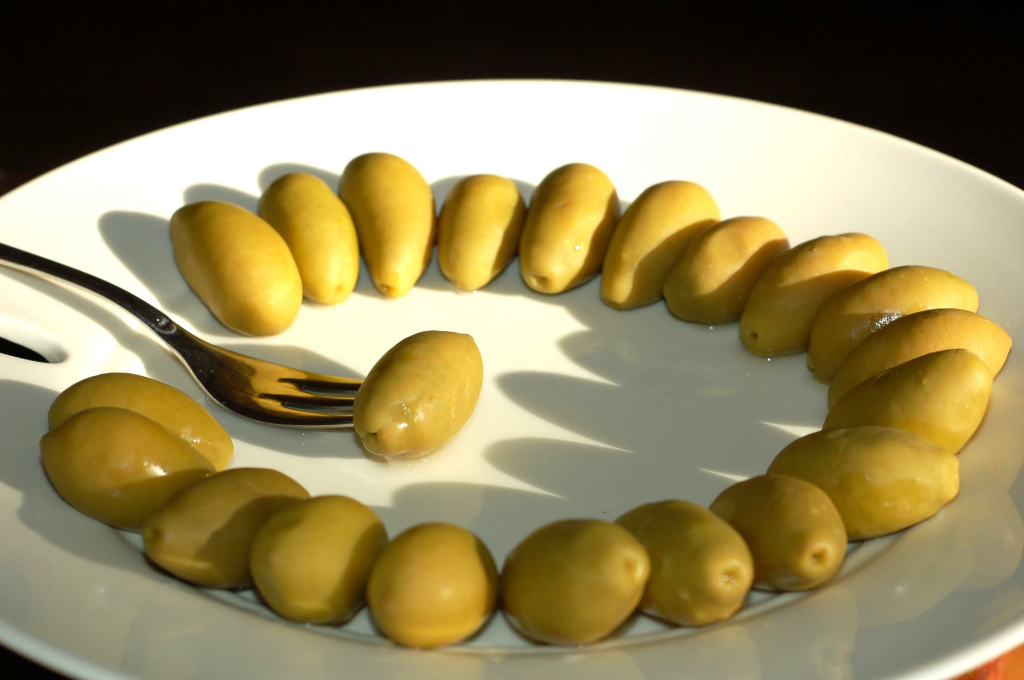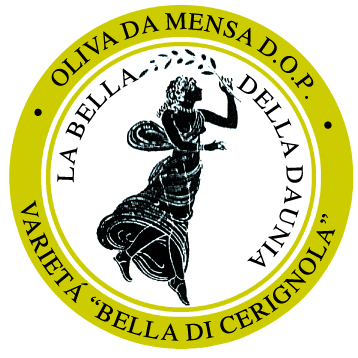 It is bright, big and very large, sweet and fruity, with a firm and bright pulp. ‘La Bella di Cerignola’ (the beautiful one of Cerignola)’, also called the ‘Bella della Daunia’ (the beautiful of Daunia, a region in the north western of Puglia), is one of the most tasty and popular varieties of table olives in the Mediterranean basin. Thanks to its full and tasty flavour, it is appreciated even when eaten alone. These olives are very similar to plums, their weight ranges from 11 to 18 grams, and are particularly resistant to handling and time. Thanks to this feature, they can be stored for a long time and are suitable for export.
It is bright, big and very large, sweet and fruity, with a firm and bright pulp. ‘La Bella di Cerignola’ (the beautiful one of Cerignola)’, also called the ‘Bella della Daunia’ (the beautiful of Daunia, a region in the north western of Puglia), is one of the most tasty and popular varieties of table olives in the Mediterranean basin. Thanks to its full and tasty flavour, it is appreciated even when eaten alone. These olives are very similar to plums, their weight ranges from 11 to 18 grams, and are particularly resistant to handling and time. Thanks to this feature, they can be stored for a long time and are suitable for export.
A simple and natural working
 Olive was introduced by Spain before 1400, in the period of Aragon. It was processed and kept more in order to meet the nutritional needs of one’s family during the winter than for commercial purposes. The Spanish presence increased the use of olive for immediate consumption, too, not only in order to produce oil. The farmers of Puglia spread throughout Europe the preservation process of olives, the so called ‘Sistema sivigliano’, based upon ash and soda: towards the end of October, the olives were harvested directly from the trees, under which sheets were placed in order to prevent the fruit from falling on the ground; the so harvested olives were then treated with a mixture of ash, quicklime, and hot water, for removing the bitter taste of their skin, then washed with running water and put in brine with thyme and bay leaves. This process has been kept unchanged for centuries, even if more refined industrial methods have been adopted.
Olive was introduced by Spain before 1400, in the period of Aragon. It was processed and kept more in order to meet the nutritional needs of one’s family during the winter than for commercial purposes. The Spanish presence increased the use of olive for immediate consumption, too, not only in order to produce oil. The farmers of Puglia spread throughout Europe the preservation process of olives, the so called ‘Sistema sivigliano’, based upon ash and soda: towards the end of October, the olives were harvested directly from the trees, under which sheets were placed in order to prevent the fruit from falling on the ground; the so harvested olives were then treated with a mixture of ash, quicklime, and hot water, for removing the bitter taste of their skin, then washed with running water and put in brine with thyme and bay leaves. This process has been kept unchanged for centuries, even if more refined industrial methods have been adopted.
A beautiful land
The ‘Bella di Cerignola’ olive is widespread mainly in the municipality of Cerignola and, to a lesser extent, in the municipalities of Ortanova, San Ferdinando di Puglia, Stornara, Stornarella, and Trinitapoli. These municipalities are located it the great plain called ‘Tavoliere della Puglia’. It consists of low hills which do not exceed 200 meters in height, where the olive trees dominate the landscape coloured by the green parks and forests, the yellow grain of the Tavoliere, the blue waters of the sea which contrast with the white cliffs of the coast. The land surrounding Cerignola has been inhabited since Neolithic times, as evidenced by traces dating back to that period, found by archaeologists. Its ancient olive growing is confirmed by many written witnesses and such manufactured articles as jars for storage and mills for pressing olives.
The export
At the end of the nineteenth century the olives of Cerignola were already sent in the western part of the USA in the characteristic wooden barrels called 'Vascidd', with a capacity varying from kg 50 to 100, and even more in the so-called 'Cugnett', typical cone-shaped wooden containers whose capacity was kg 10, for retail supply. The large and tasty olives of Cerignola, once proposed only in their green version, either natural or in oil, are now proposed also coloured in red with natural elements and increasingly elaborate seasonings, but always strictly related to the scents and flavours of the Mediterranean Sea. This has given a great boost to exports, once linked to USA only, which remain the main foreign market, to which also France, Germany, and Scandinavia added.
Nature and technology
In order to keep such a natural product, however subjected to some treatments, local producers, gathered in a Consortium, strictly follow some rules. The 'Bella di Cerignola' olive must be marketed in appropriate glass or thermoplastic holders, with minimum drained weight of g 100, or in tin packages with minimum drained weight of g 180, and in plastic holders ranging from kg 20 to 150. The plastics used are the subject of specific scientific studies, so that they do not transmit to the olives either odours or harmful substances. The packages are subjected to pasteurization and sterilization. On the label, both indications 'Bella della Daunia' and the Protected Designation of Origin are printed with clear and legible founts, in addition to the product data. The graphic symbol consists of a female figure inspired by the ancient iconographic tradition which was present in Daunia in ancient times: a dancer who in her left hand holds an olive branch.
On the label, both indications 'Bella della Daunia' and the Protected Designation of Origin are printed with clear and legible founts, in addition to the product data. The graphic symbol consists of a female figure inspired by the ancient iconographic tradition which was present in Daunia in ancient times: a dancer who in her left hand holds an olive branch.
